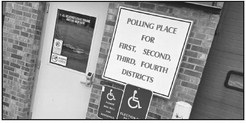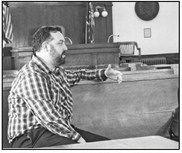America must pattern COVID-19 response on what is working elsewhere
Wisconsin Assembly speaker Robin Vos is right. Wisconsin’s current battle plan to combat the ongoing COVID-19 pandemic isn’t enough. More needs to be done.
Admittedly, Vos’s better-late-thannever epiphany came only as his political opponent was gaining in the polls. He is correct. Wisconsin, and America, need to do more to ensure people and small businesses remain healthy.
When Congress passed the CARES Act last spring, it was a commitment to a wartime level of investment to give states the resources to protect citizens and bolster local economies. Despite the confusion that comes with any fast-moving program, the CARES Act was a resounding success in putting the resources where they were needed. To continue the analogy to a military operation, the CARES Act was the D-Day assault that gave the Allies a beachhead, but it was far from a declaration of victory.
Let us hope that victory over COVID-19 does not take the years and the millions of lives that victory in World War II did. Americans need to recognize and be prepared for the long haul.
While science is working on breakthroughs in regard to vaccines and evolving medical treatment for those who become ill, the tools available to governments are few and rely on quarantines and shutdowns. Governments can choose to use those tools as selectively as a surgeon’s scalpel or bluntly like a stone head ax.
Wisconsin and America must look at how others around the world are handling the pandemic. Germany recently went into a partial shutdown, coupled with financial support for businesses such as restaurants, taverns and cinemas directly impacted by the shutdown. Other industrialized nations have similar steps in place, with focused actions and financial support. Rather than waiting for politicians to play catch-up, shutdowns and assistance to businesses should be made automatic when triggered by set criteria.
In order for shutdowns and quarantines to be effective, policy makers, just as any generals setting strategy on a changing battleground, must have adequate and timely data. While the National Guard’s testing sites around the state are helpful in gauging the level of infections on a broad scale, a five day wait between a test and a result means it will be virtually impossible to stay ahead of the virus. Wisconsin needs to follow the lead of its university system which has transitioned to rapid tests as the front-line method of determining spread. While these tests were initially less accurate than the nasal swab testing, being able to get results in 20 minutes versus five days is worth the trade off, especially given the number of people someone who is asymptomatic may come into contact with before results are known.
With the number of COVID-19 cases continuing to climb and the breakthrough of a silver bullet remedy a distant hope, Americans must be prepared for the long haul and must be willing to do whatever it takes to win the war over this vicious disease.




